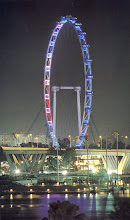

The Mooncake or Mid-Autumn festival falls on the fifteenth day of the eighth month of the lunar calendar, when the moon is at its maximum brightness for the entire year, the Chinese celebrate "zhong qiu jie." Children are told the story of the moon fairy living in a crystal palace, who comes out to dance on the moon's shadowed surface. The legend surrounding the "lady living in the moon" dates back to ancient times, to a day when ten suns appeared at once in the sky. The Emperor ordered a famous archer to shoot down the nine extra suns. Once the task was accomplished, Goddess of Western Heaven rewarded the archer with a pill that would make him immortal. However, his wife found the pill, took it, and was banished to the moon as a result. Legend says that her beauty is greatest on the day of the Moon festival.
Of course, the most famous legend surrounding the Moon festival concerns its possible role in Chinese history. Overrun by the Mongols in the thirteenth century, the Chinese threw off their oppressors in 1368 AD. It is said that mooncakes - which the Mongols did not eat - were the perfect vehicle for hiding and passing along plans for the rebellion. Families were instructed not to eat the mooncakes until the day of the moon festival, which is when the rebellion took place. (In another version plans were passed along in mooncakes over several years of Mid-Autumn festivals, but the basic idea is the same).
Please click onto the below CAMERA icon to view more [36] photos....




































.jpg)

.jpg)

.jpg)











No comments:
Post a Comment